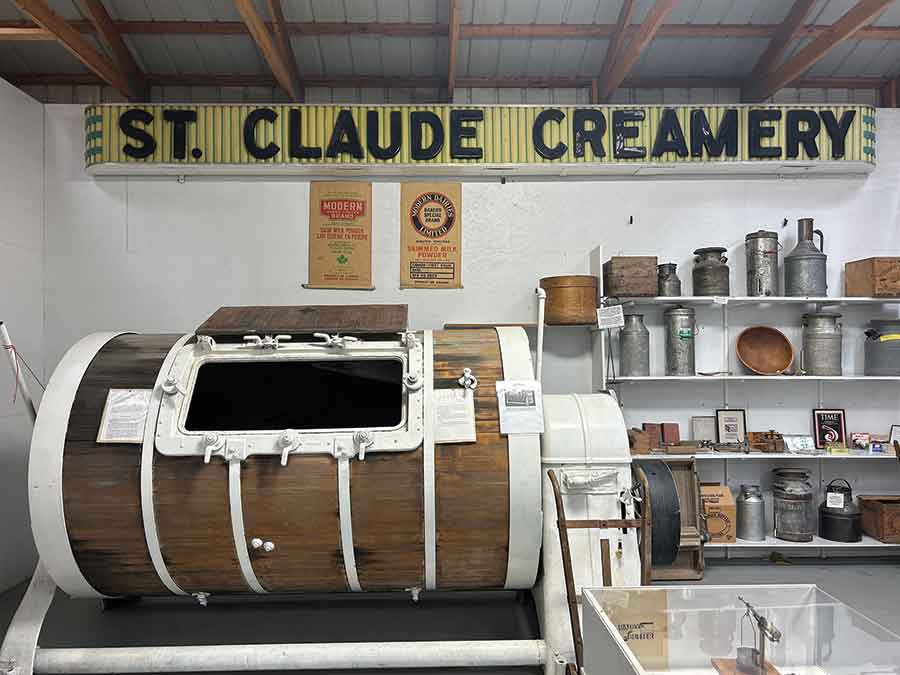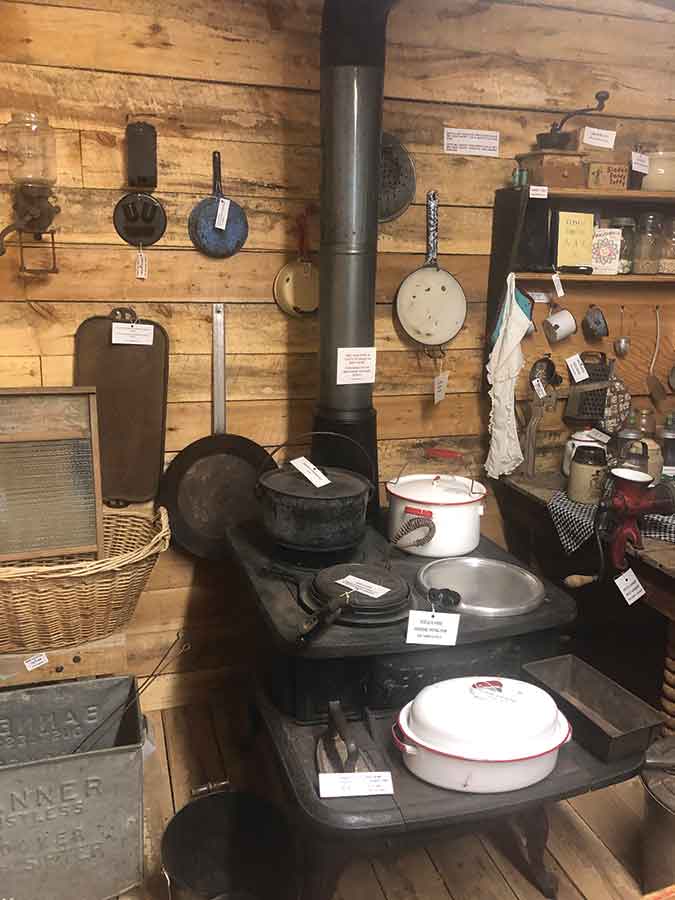By Dawn Peter
St. Claude is home to Manitoba’s only dairy museum, a seven-building complex with more than 2,000 artifacts that transports visitors back to the late 1800s.
Located on Third Street, just east of Provincial Road 240, the site reflects the spirit of its sister city, Saint-Claude, France, with a display of pipes. But here, the focus is on the detailed history of prairie life and the settlers who worked to survive on the region’s flat, sandy land.
Admission includes access to the two-storey Canadian Pacific Railway station, dairy barn, horse barn, Bell School, chapel, freight shed and blacksmith shop.
The large red CPR building features the agent’s desk, clothing from the period — including wedding dresses — a mock hospital room and a pioneer kitchen. Photographs and uniforms line the walls in tribute to the many local veterans, mostly French immigrants, who volunteered in the First World War to defend France.
“When the First World War broke out … they took off en masse to France … to serve as volunteers,” said Robert De Smet of the St. Claude Historical Society. Up to 70 residents served with both the French and Canadian armies.
The chapel contains models of two former churches and a design for the current one by an architect. Along its walls are dolls dressed in the robes of the silent Trappist monks and a dark, hand-crafted spiral staircase that leads to a priest performing mass.
Bell School is furnished with wooden desks, slate boards and inkwells, along with a quaint list of rules for teachers that allots time for courting and Bible study but discourages shaving at a barber shop.
The dairy barn — envisioned by lifelong cream producer Raymond Phillipot — houses five-gallon cream cans, veterinary equipment, butter churns, milk-testing bottles, and curiosities such as a Siamese twin piglet and a calf. Framed photographs show barns across Manitoba alongside the names of producers and executives from the Lactalis cheese-processing plant in St. Claude.
Although the number of dairy farms has declined over the years — even as automation, refrigeration and transportation have advanced — the industry here grew thanks to settlers who traded surplus cream for cash.
That legacy is represented by the life-size Holstein-Friesian cow outside the barn, painted in black and white. Look closely: the spots are shaped like the continents of the world.
The museum grounds are also home to a popular geocaching location. Geocaching is a family-friendly treasure hunt that uses GPS coordinates to locate hidden containers filled with trinkets and trackable items. The difficulty can range from an easy find under a bench to a search a mile uphill. Descriptions of each cache, along with terrain ratings, hints and waypoints, can be found at www.geocaching.com.
From June 26 to Sept. 5, 2025, the theme is “hidden gems.” Visitors might find something shiny and valuable at the Manitoba Dairy “Moo-seum.” Just steer clear of the manure spreader, and you’ll be free to wander and wonder until the cows come home.


